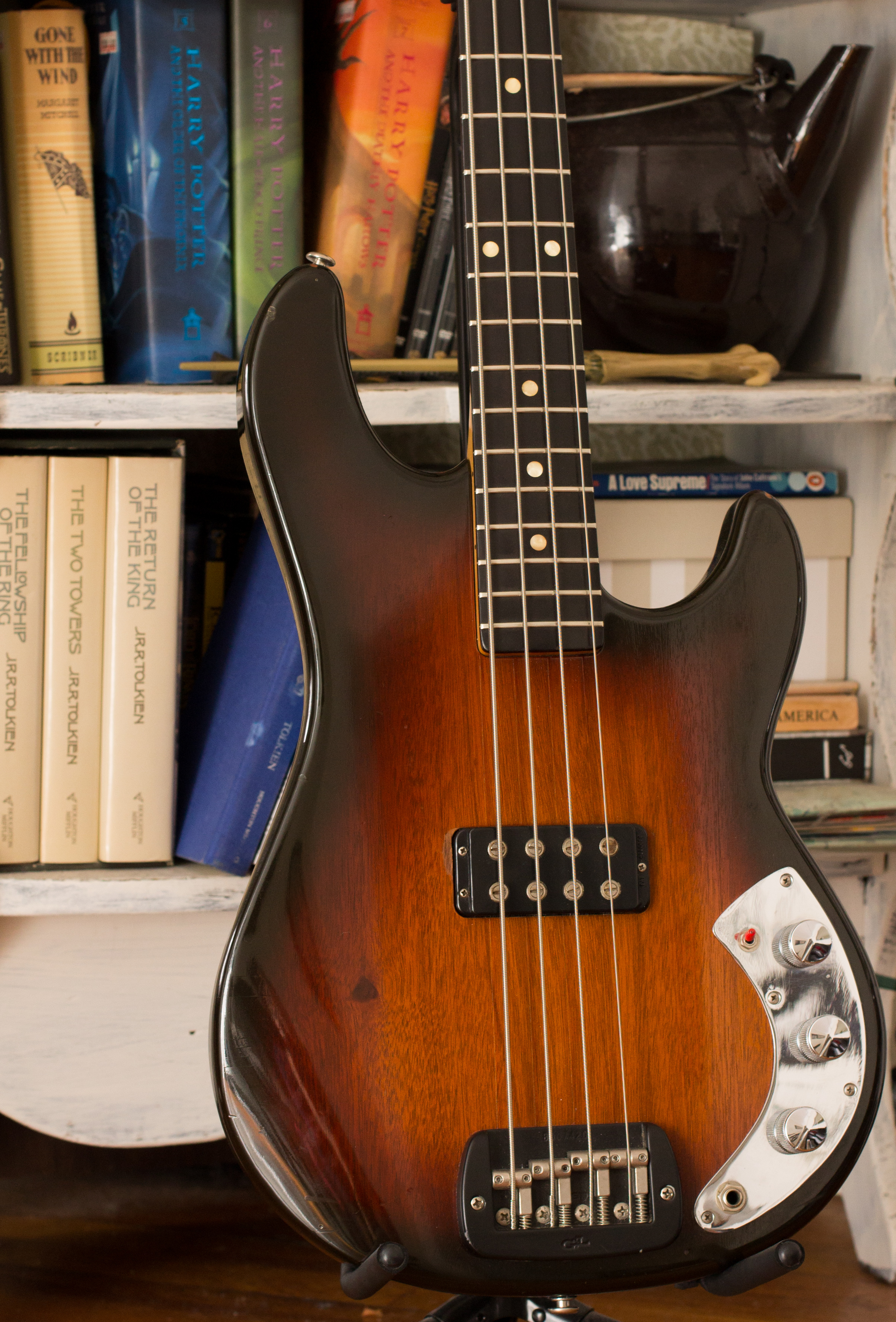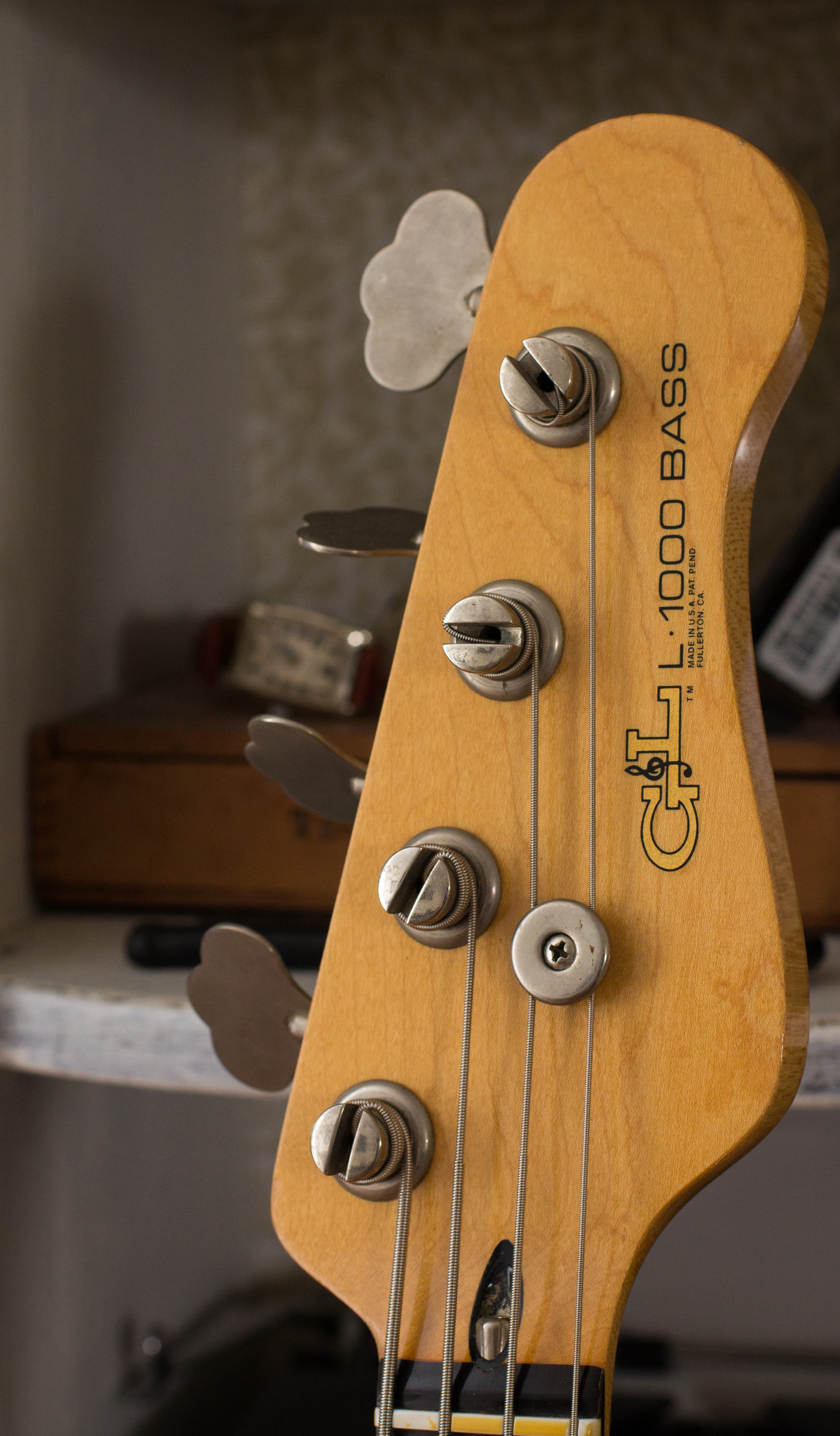The G&L L-1000 - or "Wunkay" (1k, get it?) - was among the first instruments produced by G&L, Leo Fender's post-Music Man venture, circa 1980. The single-pickup L-1000 was designed by Leo and combines elements of two of his legendary, enduring creations: the Fender Precision Bass and the Music Man Stingray.
This all-original, Mahogany-bodied example was produced in 1981 and is a "transitional" instrument, produced while Leo was still refining the recipe (one example is the chrome control plate on this bass - these would soon be black powder-coated).
The pickup is Leo's proprietary MFD ("Magnetic Field Design") pickup, which is a ceramic (rather than Alnico) pickup. This example has adjustable slot-head pole pieces, which is a rare, short-lived feature bookended by large allen-head pole pieces (1980) and smaller allen-head pole pieces (1982-on).
This bass is passive, not active like Leo's Stingray. The controls are volume/bass boost/treble boost, and the three-way switch provides (left to right) series / single coil / single coil with bass boost.
One of my favorite features of the L-1000 is that rather than rosewood fretboards, which Leo traditionally used, these came with ebony fretboards (maple was also an option, of course). The ebony fretboard on this bass is stark black and completely streak-free. Combine this with the aged white pearl dots, and this is an instrument with a real touch of class.
These basses have a reputation for being heavy, but I am happy to report that this bass weighs in at a relatively svelte 9.5lbs.
The nut width is 1 11/16", which is a little skinnier than I'm used to, and the neck profile is thin. The truss rod works perfectly on this bass, and the action is nice and low. This bass plays absolutely beautifully.
It is in fantastic shape for its age, showing signs of use but not abuse; note the buckle rash on the back, and the thumb wear above the pickup. The chrome on the control plate shows almost no pitting or peeling, and the frets are in tip-top shape.
Enjoy the photos, and scroll down further for the story of how I happened upon this amazing bass.
I have lusted after a B00 serial number (i.e., first two years of production) L-1000 for the last few years. I had a very particular configuration in mind - I wanted a sunburst bass with an ebony fretboard.
Whenever one came up for sale, it always seemed to be too expensive, too heavy, not quite the configuration I was looking for, etc. I had also never played one or even seen one in the flesh. These are extremely rare birds.
As of writing time. for my last 3 gigs, I have gigged without a backup bass, which is a really bad idea. After a recent gear purge, only my Road Worn Precision remained, my main bass for the past 3 years. With my band heading up to Boston for a mini-tour this weekend, I needed a backup bass and I needed it fast.
Although I was in absolutely no position to be picky here, I found myself completely paralyzed. No bass on my local (NYC) craigslist or at any Manhattan shops moved me whatsoever. Having something shipped in was not an option considering the time crunch I was under.
Pretty much resigned to the fact that I'd be shipping up to Boston with only one bass (and perhaps buying one while up there), as a last-ditch effort for a cheap Precision or something, I went to Castellano's House of Music in my hometown of Staten Island, where I taught music for several years full time.
Castellano's is a very cool store, but they mostly carry entry-to-mid level instruments (usually they'll have a couple of Les Pauls on the wall, and it trickles down from there).
But wouldn't ya know it - I walk in (having not been there for several years), and what's hanging on the wall but a 1981 G&L L-1000, sunburst, ebony fretboard, in GREAT condition! Before I even picked it up, I knew I'd be leaving with it - and I did.
I'm still reeling from the fact that I found the exact bass I had been after in the place I least expected to find it.
(Photos © John Biscuti, March 2015)








